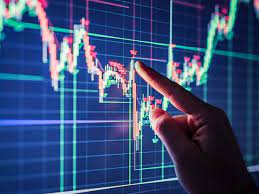Drawdown measures the “peak-to-trough” decline in value of a portfolio, or any investment, over a given period of time, as featured with Investopedia. In the real world, drawdown occurs in dollars and cents, but when analyzing the performance of a portfolio stock traders work in terms of percent. It wouldn’t be uncommon for a stock portfolio to experience a drawdown of 10 percent.
The ability to minimize drawdown is one of the key traits of top-performing stock traders, investment managers, and other portfolio managers. Selecting the very best stocks is not enough. Investors must also control risk.
Knowing the size of past historical drawdowns of any investment under consideration is important for investors seeking to limit the risk they take on. Many organizations that analyze fund performance describe the largest of these using a metric known as maximum drawdown (MDD), as featured with Investopedia.
However, “past performance” is “not indicative of future success,” as featured with CNBC. Portfolios that have never experienced drawdowns greater than 10 percent, suddenly do. The Corporate Finance Institute explains that these are called “black swan” events.
A Stock Trader’s Worst Enemy
Stop-losses are one method equity traders use to manage the risk present in all common stock. Either mentally beforehand, or by placing a stop-loss order with their broker, stock traders control risk by deciding at what price they will sell if they are wrong. They define exactly how much money they are willing to lose.
Investor’s Business Daily recommends never allowing an individual stock to fall more than 8 percent from the price it was purchased.
If a stock falls 5 percent, it must then gain 5.26 percent to break even. A 10-percent drop necessitates an 11.11-percent gain to break even. A 50-percent drop; a 100-percent gain to break even. Note how quickly the amount to break even becomes significant as the loss size increases, particularly above 10 percent.
It’s like an extra 1.11 percent penalty for every 10 percent loss portfolio managers take. And an extra 50 percent one for those who allow investments to fall as far as 50 percent. No matter what investment strategy is employed, the importance of minimizing drawdown cannot be understated.
ARK Innovation Exchange-Traded
The ARK Innovation Exchange-Traded Fund headed by star Cathie Wood is, as of March 15, 2022, trading 66 percent below its all-time high near $160 printed in early 2021. A drawdown of 66 percent.
In order for investors who bought the ARK Innovation ETF at its peak to break even, the fund must return close to 200 percent, a tall order for even the very best fund managers during the very strongest bull markets. Ms. Wood’s stalwart status really isn’t open for debate; whether she will again find such warm winds in the sails of her firm’s flagship fund remains to be seen. Despite this seemingly lackluster recent performance, Cathie Wood appears to remain bullish.
“Given our expectations for growth in these new technologies, I think we’re going to see some spectacular returns,” Wood was recently quoted by CNBC. Over the past five years, her ARK fund has returned an average of 38.41 percent per year.
Conclusion
Those who employ stop-losses as a risk-management technique make assumptions and continue to face black-swan-like risk from liquidity events that could conceivably cause stock prices to gap down, not trade at every price level, upon opening or even during the trading day with unprecedented news. Those who use stop-losses, and most investors, assume that the market is going to open every day as scheduled and that there will be a liquid market of buyers available to quickly sell unwanted shares to.
